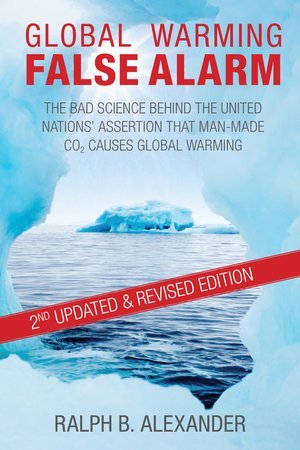Climate Model Track Record Improves Slightly: Paused Arctic Sea Ice Loss Predicted Correctly
/As readers will know, I’ve been highly critical of computer climate models in these pages (see, for example, here and here). Some models greatly exaggerate future warming, or overestimate low cloud feedback, or are unable to reproduce observed sea surface temperature trends.
But a new study exonerates the models when it comes to predictions of sea ice loss in the Arctic, in particular the pause in loss of Arctic sea ice during the past two decades. Despite rising global temperatures, and contrary to alarmist projections of an ice-free summer by 2020, no statistically significant decline in Arctic summer minimum sea ice extent occurred between 2005 and 2024. Sea ice expands to its maximum extent during the winter and shrinks during summer months.
In correctly predicting this 20-year pause, the UK – U.S. collaboration partially redeems the same CMIP5 and CMIP6 models that have previously been shown incapable of accurately hindcasting the observed Arctic sea ice decline during the warming period of the early 20th century.
The present study also finds that periods with no sea ice loss while greenhouse gas emissions continue to increase are not at all unusual in large-ensemble CMIP5 and CMIP6 simulations. The modeling results suggest that internal climate variability – due to natural ocean cycles such as the AMO (Atlantic Multidecadal Oscillation), the PDO (Pacific Decadal Oscillation) or the NAO (North Atlantic Oscillation) – has offset any possible loss of Arctic sea ice due to human emissions.
The figure below illustrates the current robust and prolonged pause in Arctic sea ice loss, based on U.S. NSIDC (National Snow and Ice Data Center) data from satellite measurements, one of two key sea ice indices. The top panel shows the minimum summer ice extent in September over the satellite era from 1979 to 2024.
The center panel depicts 20-year trends during that time, the mean trend being a loss of 0.30 square km per decade, an amount that is not statistically significant despite the strong minimum in 2012; the red shaded envelope represents the 95% confidence level for statistical significance. The insignificant trend is approximately four times smaller than the peak 20-year sea ice trend recorded from 1993 to 2012. The bottom panel demonstrates how the current pause in Arctic sea ice loss shows up in every single month of the year, not just September.
The same effect of a drastic slowdown in Arctic sea ice decline is also evident in sea ice volume. The volume depends on both ice extent and thickness, which varies with location as well as season. Arctic ice thickness is notoriously difficult to measure, the best data coming from limited submarine observations.
According to the study authors, the loss of Arctic sea ice volume has stalled for at least the past 15 years, as shown by the shaded band on the left of the next figure. For the period 2010 to 2024, the simulated annual mean Arctic sea ice volume decreased by only 0.4 million cubic km per decade, a value that is seven times smaller than the long-term simulated loss from 1979 to 2024 of 2.9 million cubic km per decade, and again is not statistically significant.
Geographically, the sea ice volume loss is mostly evident in the Barents Sea, while the slowdown in September sea ice extent occurs mainly in the Pacific and Eurasian sectors. A satellite-derived image of total minimum Arctic sea ice extent is shown on the right of the above figure; the blue contour represents the median extent for 1991-2020.
As mentioned above, the new study has discovered that CMIP5 and CMIP6 climate models frequently simulate pauses in Arctic sea ice loss like the present one, rather than the past 20 years being an unexpected, rare event. Analysis of ensemble members that simulate the observed pause indicates that the current slowdown could possibly persist for a further five to ten years, say the study authors.
The following figure shows the percentage of ensemble members in various ensembles that have 2005-2024 September sea ice loss trends less than the observed value (note that the vertical label refers incorrectly to greater than). As can be seen, the multimodel average indicates that the chance of the ongoing pause in Arctic sea ice loss occurring at all is approximately 20%.
Although 20% is not 100%, the fact that climate models can make such a prediction is remarkable. Furthermore, the authors infer from the multimodel average that the present pause in September Arctic sea ice loss has a 1 in 2 chance of persisting for a further five years, and a 1 in 3 chance of persisting for another ten years.
In conclusion, the authors comment that their study is “a reminder that we should be humble about multidecadal predictions of the climate system, especially in highly variable regions such as the Arctic.”
Next: Ice Sheet Update (1): Reversal of Fortune for Antarctic Ice Sheet







